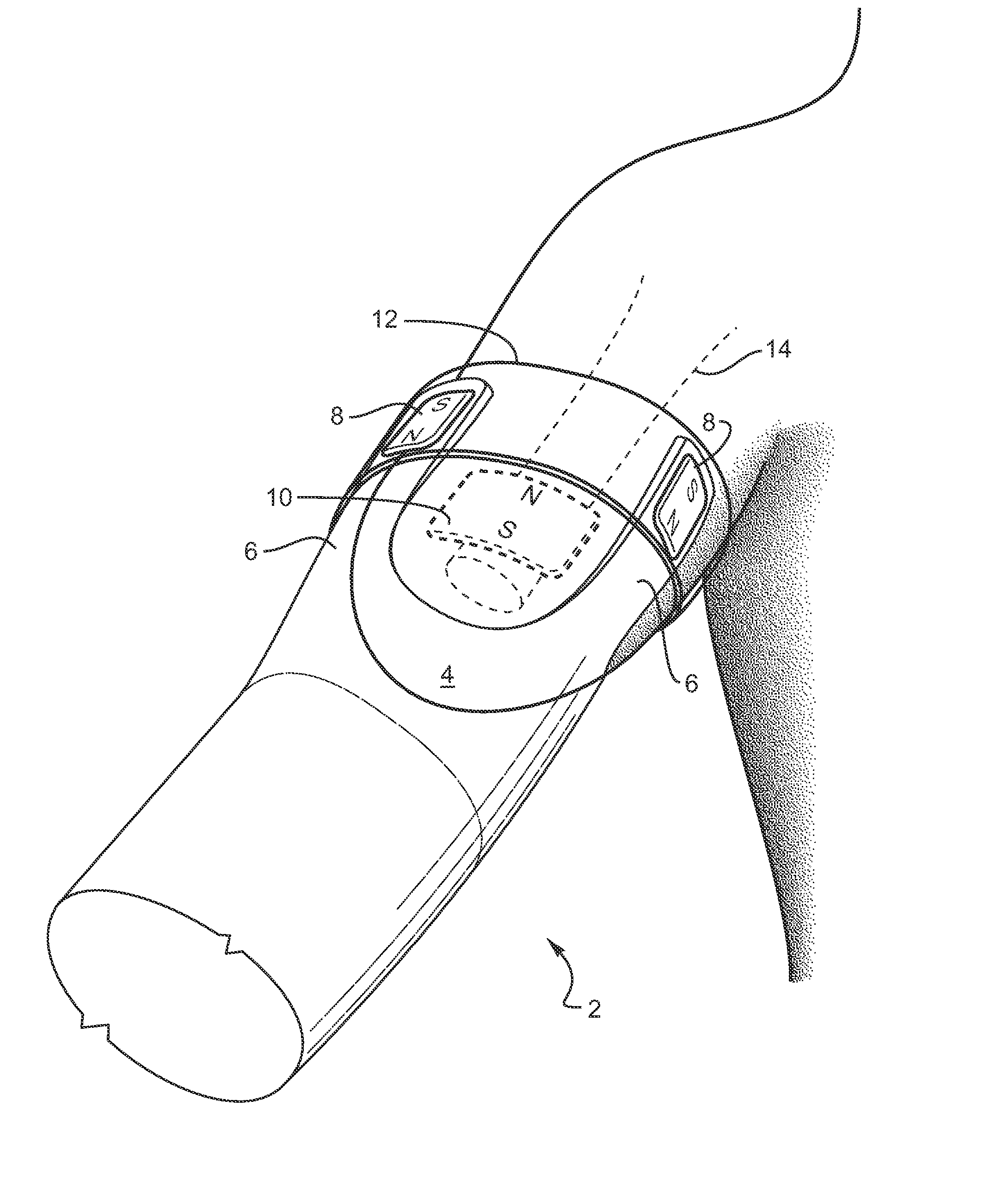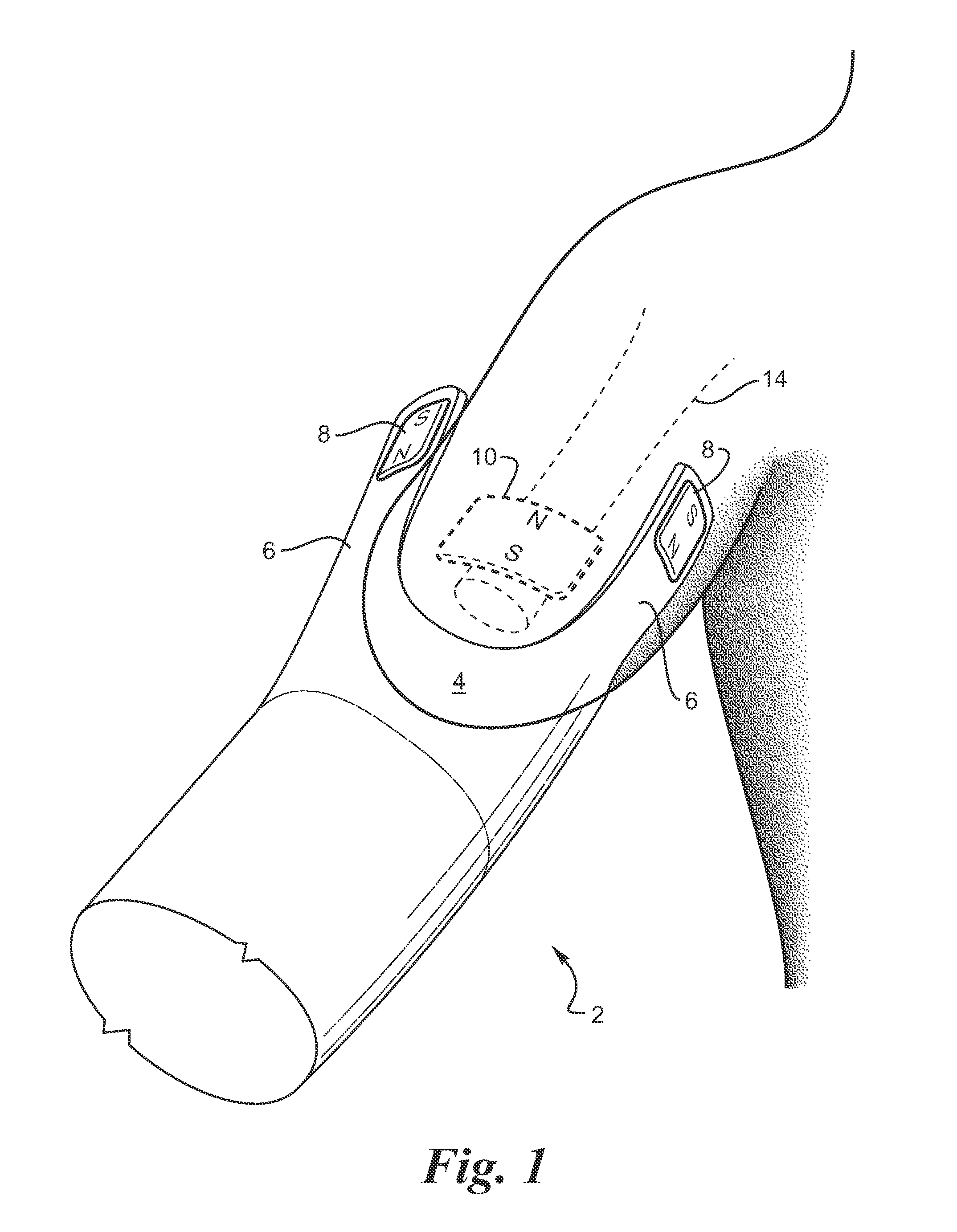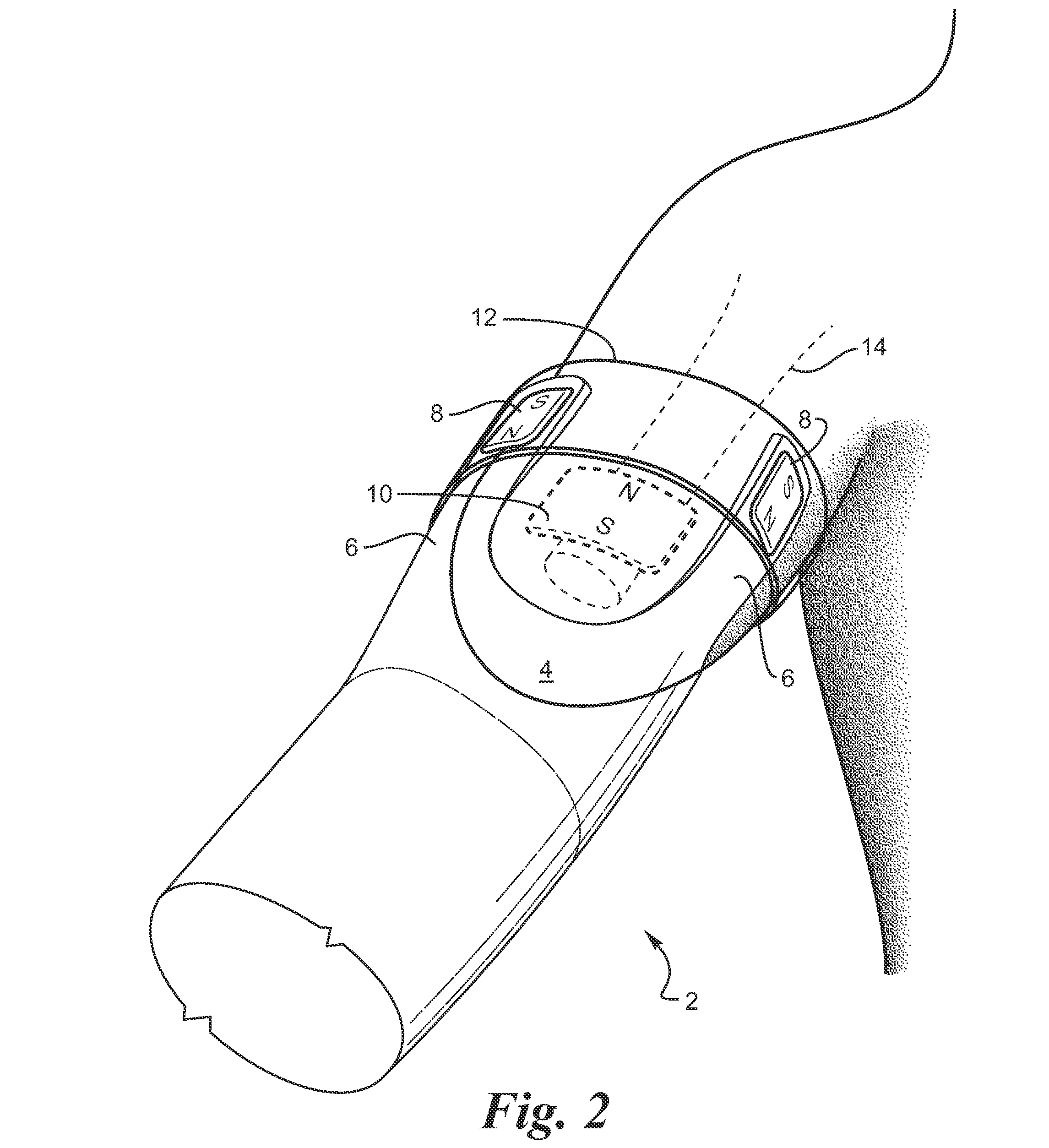Strapless prosthetic arm
a prosthetic arm and strapless technology, applied in the field of prosthetics, can solve the problems of chafing against the patient's body giving rise to sores and abrasions, unable to independently support the weight of the lower limb prosthesis, and unable to achieve the effect of securing the strap,
- Summary
- Abstract
- Description
- Claims
- Application Information
AI Technical Summary
Benefits of technology
Problems solved by technology
Method used
Image
Examples
Embodiment Construction
[0022]FIG. 1 provides a perspective view of a preferred embodiment of an arm extremity 4 with internal bone 14 and prosthesis 2. A magnet 10 is implanted in the extremity 4 to facilitate in retaining the prosthesis 2 on the extremity 4 by the magnetic repelling force generated by similar magnetic poles being placed facing each other of implanted magnet 10 and attachment magnets 8 that are securedly fastened in an attachment flap 6 of the prosthesis 2. In the illustration, the north poles of the implanted magnet 10 and of the attachment magnet 8 are repelling each other thereby urging the prosthesis 2 into retention on the extremity 4. Attachment flap 6 may be comprised of a rigid non-magnet rigid material such as a plastic or a flexible material such as a cloth.
[0023] The embodiment presented in FIG. 1 illustrates one implanted magnet 10, although it is preferable to have a plurality of implanted magnets 10 disposed at intervals around the extremity 4 to facilitate creation of an e...
PUM
 Login to View More
Login to View More Abstract
Description
Claims
Application Information
 Login to View More
Login to View More - R&D
- Intellectual Property
- Life Sciences
- Materials
- Tech Scout
- Unparalleled Data Quality
- Higher Quality Content
- 60% Fewer Hallucinations
Browse by: Latest US Patents, China's latest patents, Technical Efficacy Thesaurus, Application Domain, Technology Topic, Popular Technical Reports.
© 2025 PatSnap. All rights reserved.Legal|Privacy policy|Modern Slavery Act Transparency Statement|Sitemap|About US| Contact US: help@patsnap.com



